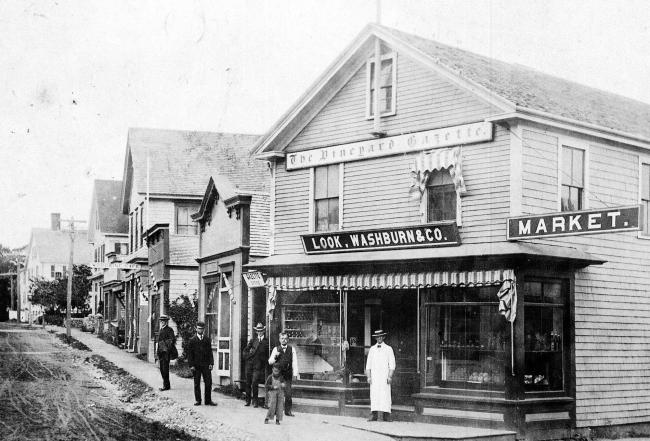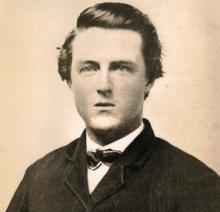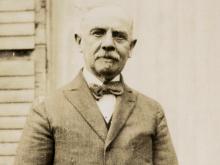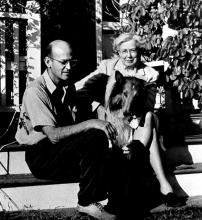Almost in time for last week’s printing deadlines, the Vineyard Gazette dragged its typesetting technology, kicking and scratching, into the age of high-speed computers. Except for a few pieces of the almanac listings, all the news in the April 16 edition was typeset on a microprocessor-based system manufactured by the Harris Corporation.
When the Gazette installed a paper tape-punching production system seven years ago, its computer equipment was state-of-the-art for weekly journalism. But paper tape and the older computers have gone the way of the heath hen in this age of the megabyte, and it was decided after the busy summer season of 1981 to move to a new generation of equipment.
The Harris system produces nothing so reassuringly tactile as a roll of perforated paper. The typesetter sits at a cathode ray tube (CRT) video terminal on which each growing story glows in eerie green. (“Just like on Lou Grant,” remarked one visitor last week.) Given the right instructions, the terminal will send its stories via coaxial cable to the central processing units (CPUs), the computers which the Harris representative describes (no doubt in a calculated effort to defray the anxiety of the computerphobe) as “the traffic cops of the whole system.”
We learned early last week the aptness of the police metaphor: those traffic cops are fair, but oh, so strict. Typesetters at their glowing screens entered unclear commands and found their labors summarily consigned to what the Harris programmers amusedly called “the bit bin,” a.k.a. Through the Looking Glass, a.k.a. Never-Never Land. The microchips flew where they may, and the typesetting staff entered a few stories into the Harris system more times than they care to remember.
The Harris Corporation experts who were on hand to help the Gazette in its week of transition said they had never . seen a newspaper try to install a new ..stem, program and debug it, then \produce an edition all in one week. They left the Island, no doubt, with a better understanding of why newspapers avoid this strategy.
But space constraints at the Gazette’s pre-revolutionary offices in Edgartown made a gradual transition impossible. There was room for the old typesetting system, or the new. Not both.
Choreographing the transition to leave a little time for making an April 16 edition was a lot like trying to change engines in a VW bug while maintaining speed on the freeway. Even while the presses were rolling with the April 9 edition, the old typesetting equipment was trundled from its composing room on dollies. That very day, a new floor went in, paint went on the walls and shelving began going up.
Saturday, carpenters finished work on new shelves and counters for the Harris equipment. And Sunday, on Easter afternoon, the Gazette staff gathered to uncrate the new gear and muscle it into place. In three days, the typesetting room had been transformed from the home of the blue and gray tape readers, known familiarly as Harold and Maude, to something out of a Star Wars set.
The Harris machines occupied the room like some high-tech designer’s notion of the American dream kitchen, circa 2020. Could anything so white, could anything so clean possibly produce a newspaper, we wondered.
The answer was yes, if you know how to work it. And learn we did, as we went along. The knowledge of Christine Powers, the typesetter who had spent two weeks training on Harris equipment in Florida, was invaluable. So was the assistance of Harris programmer Doug Stivison and of sales representative Rodney St. Pierre.
But what made all the difference was the stamina of a staff that spent a solid 30 hours on its feet Thursday and Friday, wrestling the galleys of the new computerized Gazette onto the pages.
The Gazette’s seven days in April are behind us now, and already in the second week with the new system, the production staff has settled back into mere crisis. Dan Waters is showing his terminal who’s boss, putting it through a variety of programmed paces. Christine is preparing to unleash the power of the Model 2221 advertising layout terminal. Soon, even All Brown’s classified department will go to bits (computer bits, that is).
It’s a powerful system, in some ways a system only as good as its operators, and we still have a lot to learn. The office echoes with new words which grate against the soft contours of the circa 1760 walls — words like downloading, default files, format control codes, floppy disks and even a new and horrifying verb: keyboarding.
But when an errant finger consigns a story to the bit bin, the language in the typesetting room is reminiscent of days with the old system. Sometimes, the old Anglo-Saxon words are still the best.
Harold and Maude are for sale. The staff has yet to come up with tough but affectionate nicknames for the CPUs, 1420 editing terminals or 3300 phototypesetters.










Comments